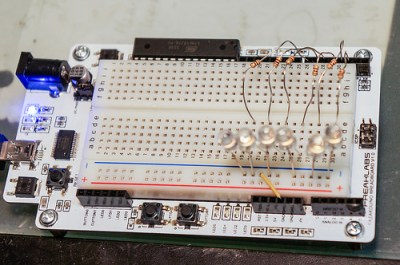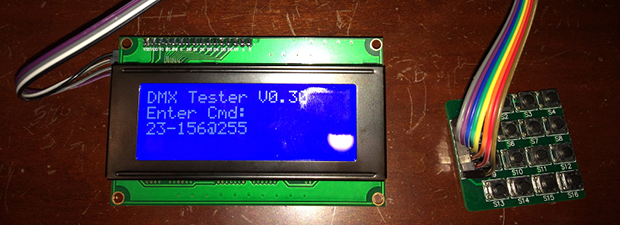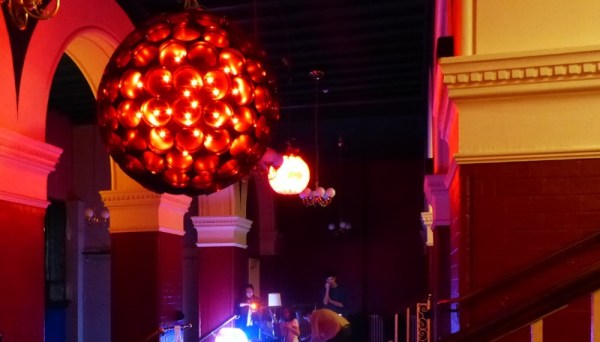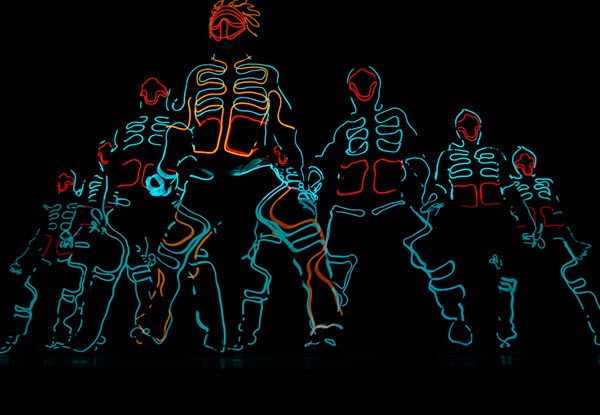Gavin Morris has been working on his awesome sound responsive LED sculptures for a while. Technically the sculpture is an interesting application of WS2812 RGB LEDs, Raspberry Pis and a load of styrofoam cups and flower pots. However the artistic development, and inspiration for this project is equally interesting. Gavin shares his thoughts and a brief technical description of the project below.
stage lighting3 Articles
Akiba’s Awesome Lighting Tutorial
[Akiba] over at FreakLabs just put up a detailed tutorial outlining how to control and sequence lighting wirelessly using an Arduino and Vixen lighting sequencer software.
For those that don’t know [Akiba], he’s the guy behind Wrecking Crew Orchestra (TRON Dance) and their EL wire costumes. [Akiba] hacks on his projects at Hacker farm out in rural Japan.

In the tutorial, he sets up a simple 6 LED circuit on a Fredboard (an Arduino compatible board with integrated breadboard). [Akiba] then describes configuring the Vixen sequencer software to control the Arduino, providing simple example code to decode the Vixen serial protocol. Finally [Akiba] shows how to use the ChibiArduino protocol stack to build a wireless illumination system.
[Akiba] has used these tools in many stage performances including with the Wrecking Crew Orchestra (shown above) and the world number 1 flair bartending crew, UPT.
This tutorial is particularly awesome, as it includes both step-by-step videos and a text reference. The videos give a great overview of the process, while the text provides a handy reference to refer to as you hack on your own illumination projects.
Thanks for the writeup [Akiba]! With Christmas just round the corner we hope to see readers using these techniques in their own festive illuminations soon!
The $50 DMX Tester

Despite being around for about as long as MIDI, DMX, the industry standard for controlling stage lighting and smoke machines, is still an astonishing expensive protocol to work with. Where MIDI can be banged out with a simple microcontroller – with odd bit rate requirements, no less, DMX testers cost hundreds of dollars. Of course this means the market is wide open for a DIY DMX tester, and over on the projects site [Tony] has just the thing.
For the hardware, [Tony] is using few 4×4 matrix keypads for user input, and a character LCD for the display. With this, he can set any of the 512 lighting channels in a DMX setup to any one of the 256 intensity values. Setting a range of channels to any intensity is a snap, with an extremely cut down command protocol. All the processing is handled by an Arduino, which seems more than capable of handling the DMX protocol thanks to the Conceptionetics DMX library.
While it’s not a full-blown lighting console you’d find in the back of a theatre, it’s more than sufficient to test a lighting rig. It also seems pretty simple to use, just the thing if you’re trying to wrap your brain around some theatrical lighting.













